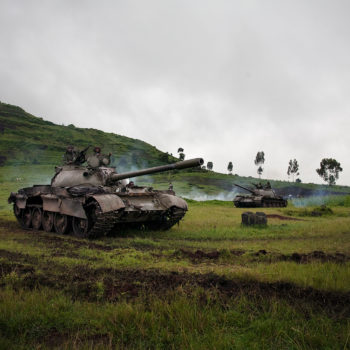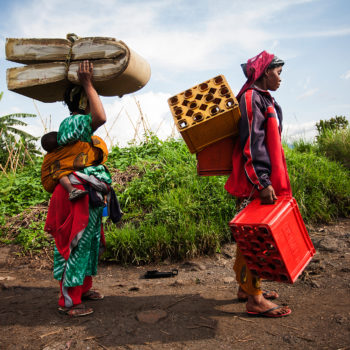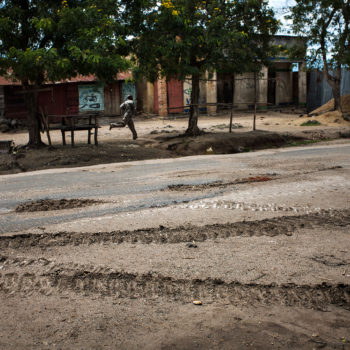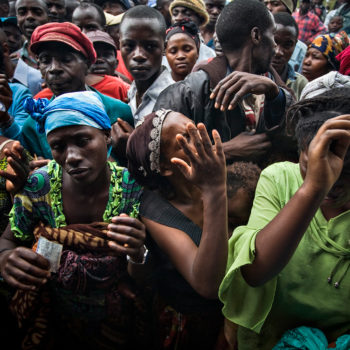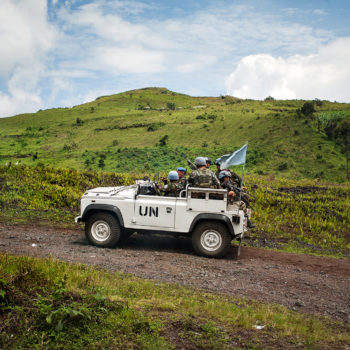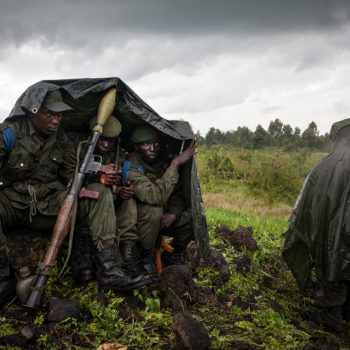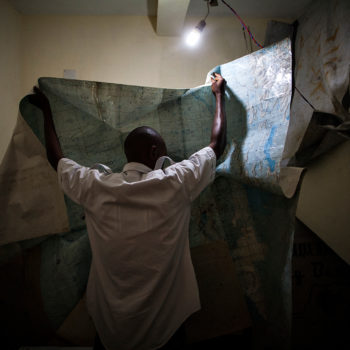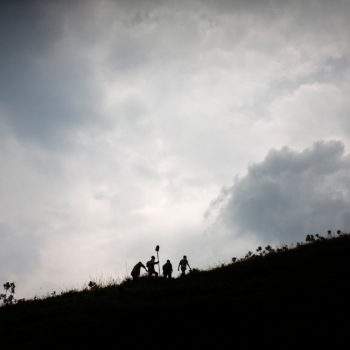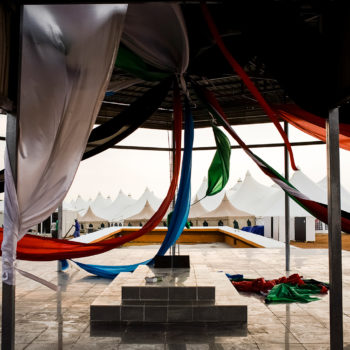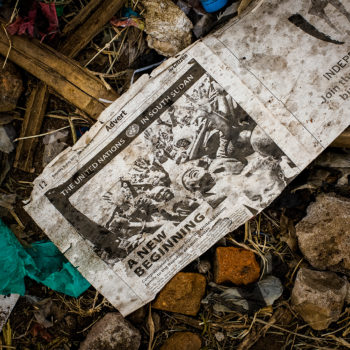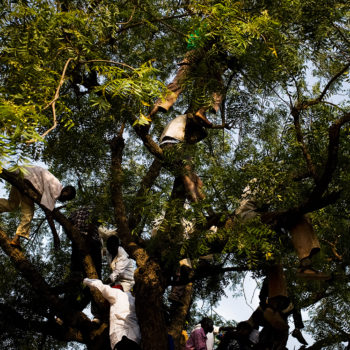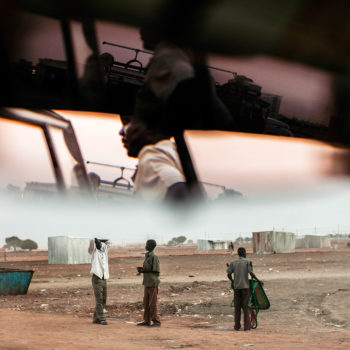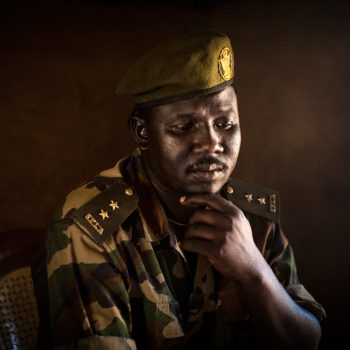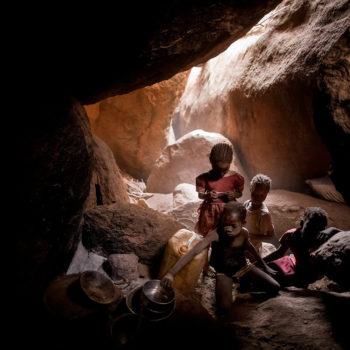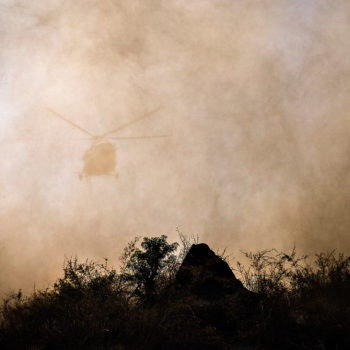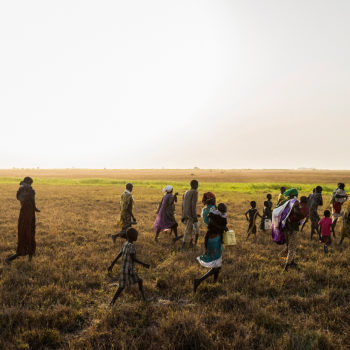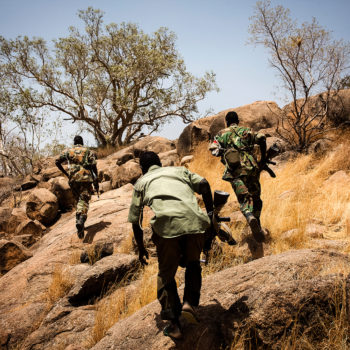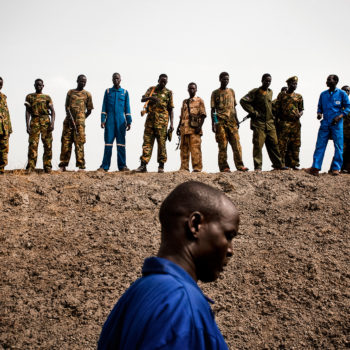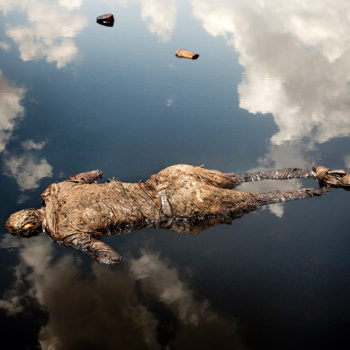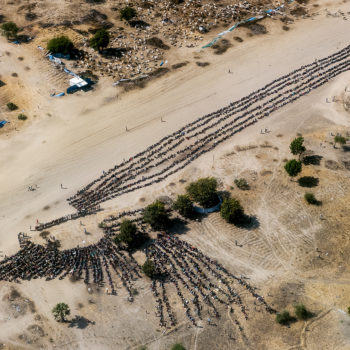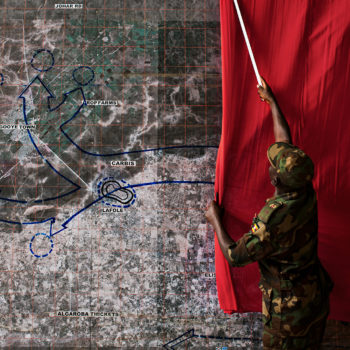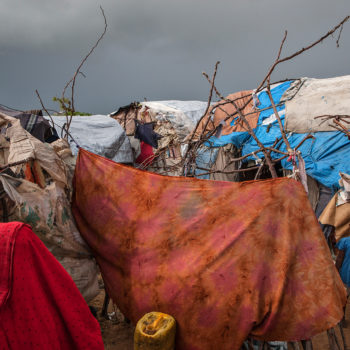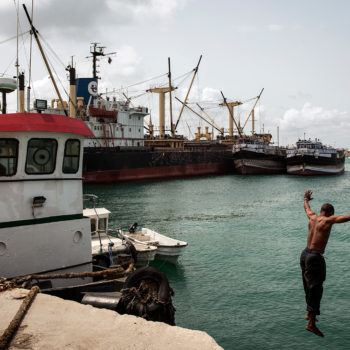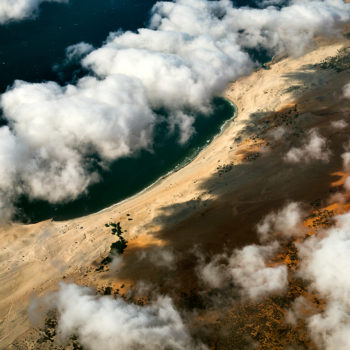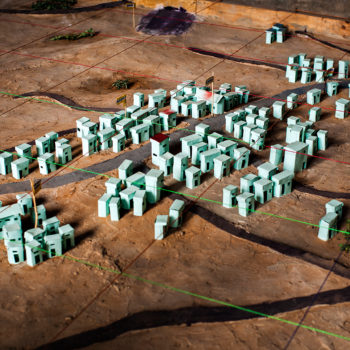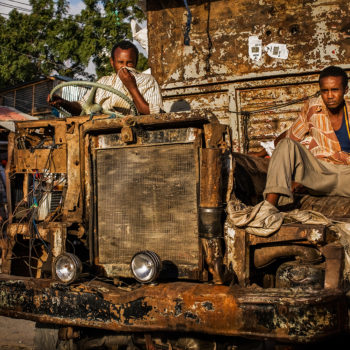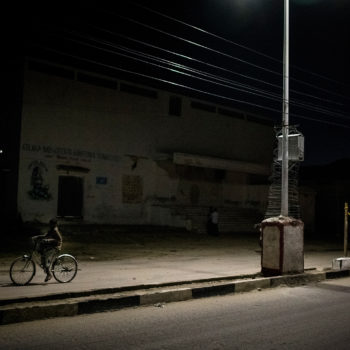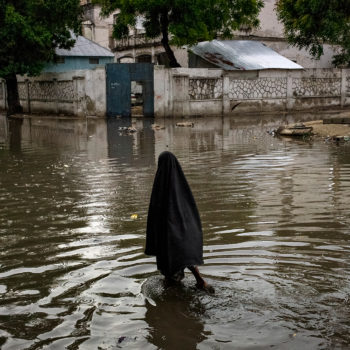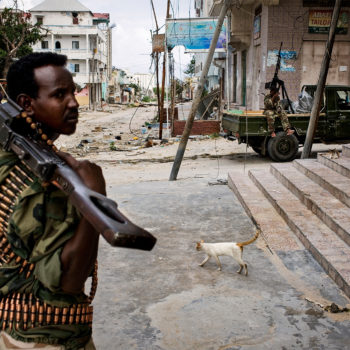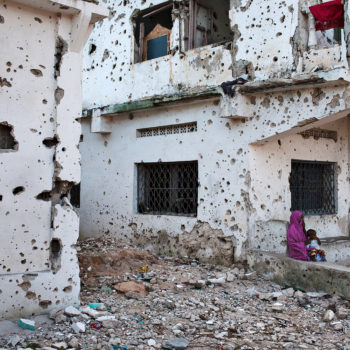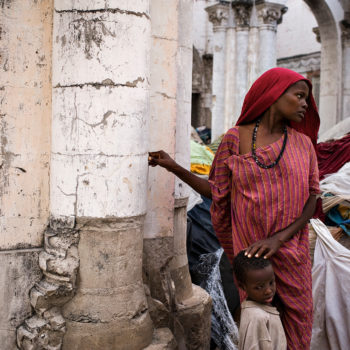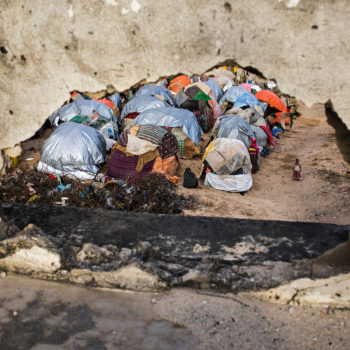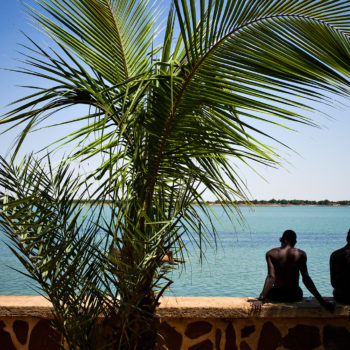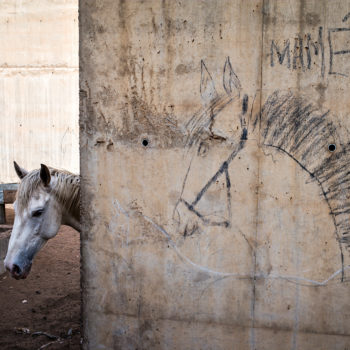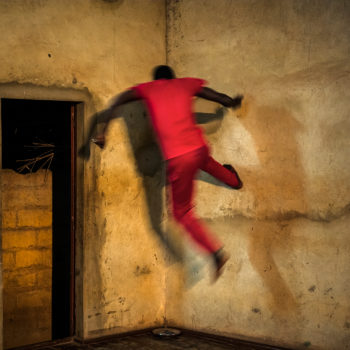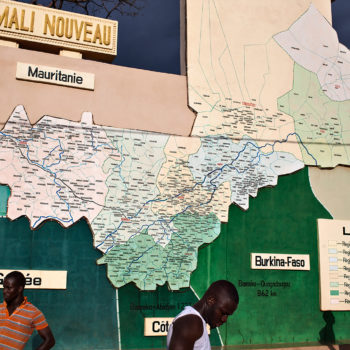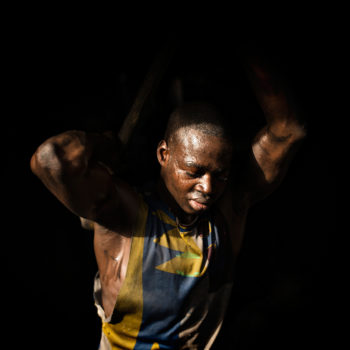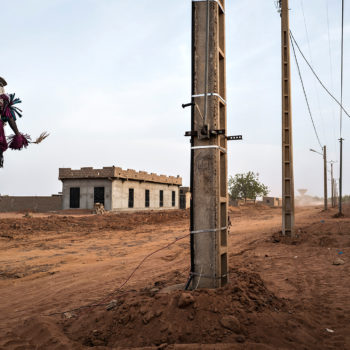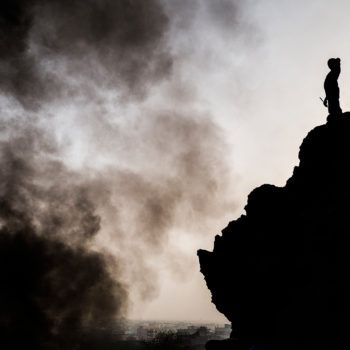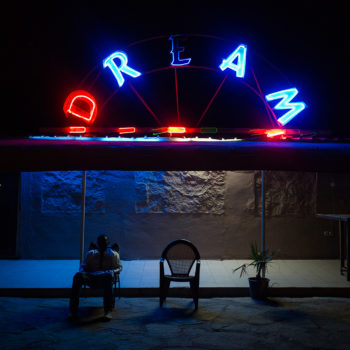Blind Spots
About
The work offered here is a selection from Dominic Nahr’s solo exhibition ‘Blind Spots’ at the Fotostiftung Schweiz (Swiss Foundation for Photography) in Winterthur. The exhibition, curated by Peter Pfrunder and Sascha Renner, deals with the condition of disintegration, justice and security in four African states: Southern Sudan, Somalia, Mali and the Democratic Republic of Congo.
Selections
Democratic Republic of Congo, Kibumba, 2008
Government military tanks take up new positions after being forced to retreat closer to Goma as heavy fighting with CNDP-rebels continues near Kibumba in the eastern part of the country.
Democratic Republic of Congo, Kabaya, 2008
Two women inside the town of Kabaya near Rumangabo in eastern Congo, where most of the fighting is concentrated. Thousands of civilians have fled into Uganda and towards Goma, the provincial capital of North Kivu in eastern Congo.
Democratic Republic of Congo, Kiwanja, 2008
A man runs down the main road of Kiwanja, 75 km north to the provincial capital of Goma. Fighting between Tutsi rebel forces and pro government militia left more than several dozen of civilians dead inside the mainly Hutu town.
Democratic Republic of Congo, Kibati, 2008
Congolese women try and get closer to a food distribution in Kibati camp, which during fights between CNDP-rebels and the Congolese military received far more people than it could hold.
Democratic Republic of Congo, Kibati, 2008
United Nations peacekeepers, who are part of over 20 000 troops sent to the Democratic Republic of Congo drive near the frontlines on the outskirts of Goma.
Democratic Republic of Congo, Kibati, 2008
Four Congolese government soldiers shelter from the rain on the frontline about five kilometers from Kibati. CNDP-rebels and government soldiers are separated by few hundred meters with regular exchanges of fire.
Democratic Republic of Congo, Goma, 2009
A radio operator for a local logistics company in Goma, searches for the exact location of his pilot in the North Kivu.
Democratic Republic of Congo, Nzibira, 2009
Miners walk up the mountains towards government controlled cassiterite mines, which have been dug out of primitive tools and were previously held by rebels in South Kivu. Cassiterite is also used in the production of mobile phones and counts among the so called conflict minerals.
South Sudan, Juba, 2011
Decorations hang unfinished at the John Garang stadium a day before Independence Day celebrations in Juba, South Sudan.
South Sudan, Juba, 2011
A section of a newspaper celebrating South Sudan’s independence lies on the ground after the official independence day celebrations were held on July 9th in Juba.
South Sudan, Juba, 2011
South Sudanese climb a large tree to get a better view of the official Independence ceremony held in Juba on July 9th 2011.
South Sudan/Sudan, Abyei, 2010
Numerous South Sudanese have come from Sudan’s capital Khartoum seeking a chance to be part of the new South Sudan. However, fighting between Sudan aligned tribal fighters and South Sudanese police have left many returnees stranded on the outskirts of Abyei.
Sudan, Undisclosed, 2012
A SPLA-N rebel soldier inside a hut in a secret base in the Nuba Mountains.
Sudan, Tess, 2012
Nuban children can be seen inside a cave where they have been hiding with little food for months from bombings by the Sudanese Armed Forces (SAF) and fighting between Sudanese government soldiers and rebel fighters fighting for the Nuba mountains.
South Sudan, Kok Island, 2015
A United Nations helicopter after having delivered aid to a small team of Medecine des Frontière (MSF) team in rebel held areas in Unity State.
South Sudan, Thonyor, 2015
Tens of thousands of people walk towards a ICRC food distribution in rebel held territory in Unity State.
Sudan, Undisclosed, 2012
SPLA-N rebel soldiers running towards a viewing point near the front-lines with the Sudanese Armed Forces (SAF) in the Nuba Mountains, Sudan.
Sudan, Heglig, 2012
Oil workers and soldiers stand near to a ground hit by an air raid of Sudanese Armed Forces (SAF) in a bombing run against South Sudanese government soldiers (SPLA) stationed nearby oil facilities after invading Sudan.
Sudan, Heglig, 2012
A dead soldier floats in a pool of oil next to a leaking oil facility, after heavy fighting between Sudanese Armed Forces (SAF) and South Sudanese government troops (SPLA) following an SPLA invasion of the Sudanese oil town of Heglig.
Leer, South Sudan, 2015
Thousands of South Sudanese from the nearby region wait in line for a distribution in the otherwise empty and destroyed Leer in Unity State.
Somalia, Mogadishu, 2012
A Ugandan soldier of the African Union mission in Somalia (AMISOM) inside the Mogadishu stadium covers up strategical battle plans that were used to take Afgoye from the Islamic terrorist group Al-Shabaab.
Somalia, Mogadishu, 2011
Makeshift shelters set up by internally displaced people in Madina camp in Mogadishu. Having fled famine-ridden areas they hoped for safety and food assistance, settling in close proximity to the airport.
Somalia, Mogadishu, 2012
A Somali man jumps into the Indian Ocean from the port of Mogadishu, Somalia’s largest port.
Somalia, 2013
The coastline of Somalia, which is over 3300km long, seen from a plane.
Somalia, Mogadishu, 2012
A model of the town of Afgoye used by the African Union commanders to plan the attack against Al-Shabaab positions.
Somalia, Mogadishu, 2011
Two Somali men drive with an old truck through the streets of Mogadishu.
Somalia, Mogadishu, 2012
A Somali rides his bicycle at night down a main road with streetlights, which only a couple of month ago would have not been safe to drive or walk down at night.
Somalia, Mogadishu, 2012
A young Somali girl walks through a flooded street in Hamar Weyne, Mogadishu.
Somalia, Mogadishu, 2011
Somali soldiers guards a street inside Bakara market, which had been liberated three days earlier from Al-Shabaab.
Somalia, Mogadishu, 2011
A Somali woman and child sit outside of a house, inhabited by families. The buildings bear the scars of many years of fighting in the streets of Mogadishu.
Somalia, Mogadishu, 2011
Families built their own makeshift shelters near the heavily fortified airport. Only a small number of organizations were helping the tens of thousands of displaced and malnourished people. The ongoing fighting with Al-Shabaab and fear of abduction and assassination of foreigners made it hard or impossible to deliver aid.
Mali, Segou, 2011
Two Malian men sit along the shores of the Niger river in the town of Segou, once popular with tourists.
Mali, Bamako, 2016
A horse behind a wall of an unfinished seating area at a horse race course in Bamako.
Mali, Bamako, 2016
A Malian man dances inside a contemporary dance studio in Bamako.
Mali, Bamako, 2011
Joggers stretch next to a large map of Mali after having run up a hill known as Point G, which overlooks the capital Bamako.
Mali, Bamako, 2016
A blacksmith at work in Bamako
Mali, Markala, 2016
A Dogon man wearing a Kanaga-mask, fully dressed up in a traditional costume walks on stilts during the annual festival of masks and puppets in Markala, north of Bamako.
Mali, Bamako, 2016
Malian kids playing on the garbage dump in Bamako.
Mali, Bamako, 2013
A man sits in front a building with the sign ‘dream’ in Bamako, while Malian and French troops fight the Islamists groups in Northern Mali.
Dominic Nahr: Blind Spots
20 May to 8 October 2017
Fotostiftung Schweiz, Winterthur
Exhibition statement (download PDF):
At the age of 33, Dominic Nahr has already been reporting for ten years from the world’s conflict zones. His photographs are published in magazines like Time, National Geographic and Stern. He has received numerous awards and is the holder of a World Press Photo Award for General News. Nahr was born in Heiden, Appenzell, in 1983 and grew up in Hong Kong. He discovered his calling at the age of 22, having followed violent mass protests with his camera for days when working for a Hong Kong newspaper. Attracted by the intensity of the events and their historical significance, he became their eye witness and chronicler. In 2009, he moved to Nairobi, Kenya, and from then on concentrated on the African continent.
South Sudan, Somalia, Mali and the Democratic Republic of Congo: four African states that fail to comply with their populations’ need for security and basic supplies. Many of their problems were caused by external factors rooting in the history of colonialism. As unstable constructs, they continue to be exposed to the profit interests of outside forces. Since its independence in 2011, South Sudan, the world’s youngest nation, has been immersed in a war for resources, above all oil, with devastating consequences for the civil population. For the first time in six years, the UNO in February 2017 declared a famine in parts of the country. In the civil war in Somalia, militias of the radical Islamic Al-Shabaab are fighting the peace troops of the African Union as well as the Somali state. The government only controls a few areas outside the capital city of Mogadishu. In Mali there is a paralysing stalemate situation as a result of a conflict between Islamist rebels in the north and the government, in which western states—especially France and Germany—have been involved since 2013. In the Democratic Republic of Congo a violent conflict is raging which goes back to the genocide in Rwanda in 1994 and is further fuelled by highly sought resources.
The exhibition “Blind Spots” also raises the question of the status of photography in the media system and in the depiction of misery and terror. The end of the Cold War and the media crisis in the early 21st century have resulted in a loss of diversity in reporting, especially when it comes to Africa. The media system exhibits a lot of blind spots—perception gaps and defence mechanisms in the face of which photographers are also powerless. Against this backdrop, Dominic Nahr’s photographs raise important issues: What can, what must be shown in a photograph? What fora does it need so as to draw our attention? Released from the utility value of reporting on current affairs, the pictorial idiom and deliberate composition of Nahr’s photographs shift impressively to the fore. Just how beautiful may a terrifying image be? Can we be sure of not falling victim to a kind of gloomy fascination? Do the photographs fail to have an impact when repeating a well-known negative image of Africa? And how can we bear the enchantment of what is depicted when we hear that the reality is of an almost unsurpassable bleakness?
— Peter Pfrunder, Sascha Renner, Fotostiftung Schweiz, 2017
Availability & Pricing
Prints are available in the following formats:
Size: 12″ x 18″; Edition: 10 + 2AP
Size: 16″ x 24″; Edition: 5 + 2AP
Size: 32″ x 48″; Edition: 3 + 2AP
Size: 40″ x 60″; Edition: 2 + 2AP
Please contact the gallery for more information, including current availability and pricing.
Request InfoCollections
Fotostiftung Schweiz (Swiss Foundation for Photography), Winterthur (Switzerland)
Corcoran Collection, National Gallery of Art, Washington D.C. (USA)
Harry Ransom Centre, University of Texas at Austin (USA)

